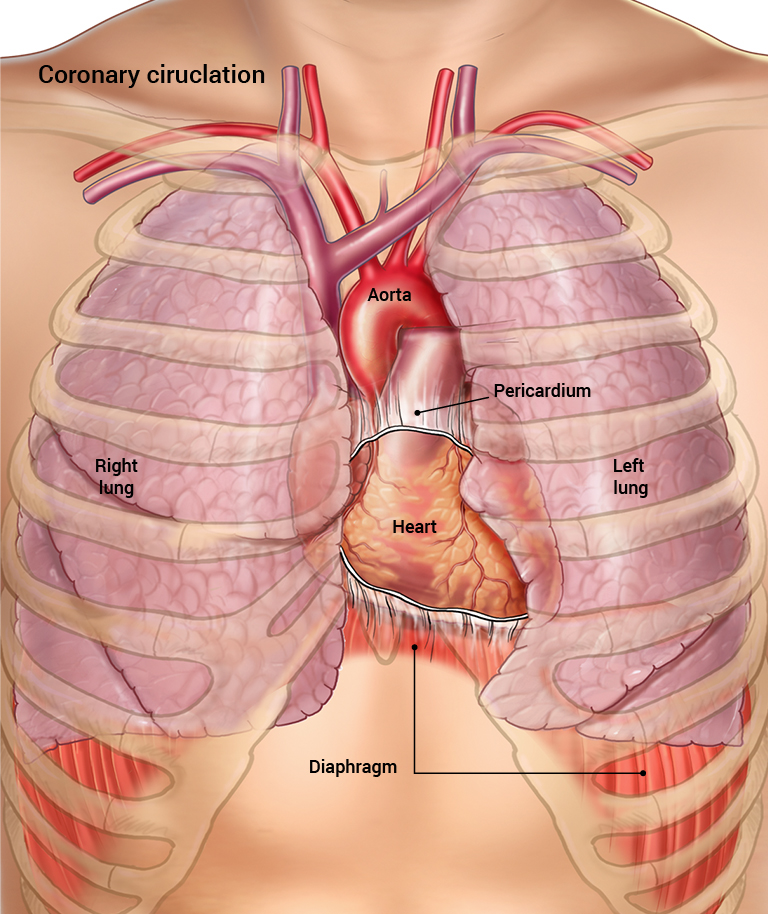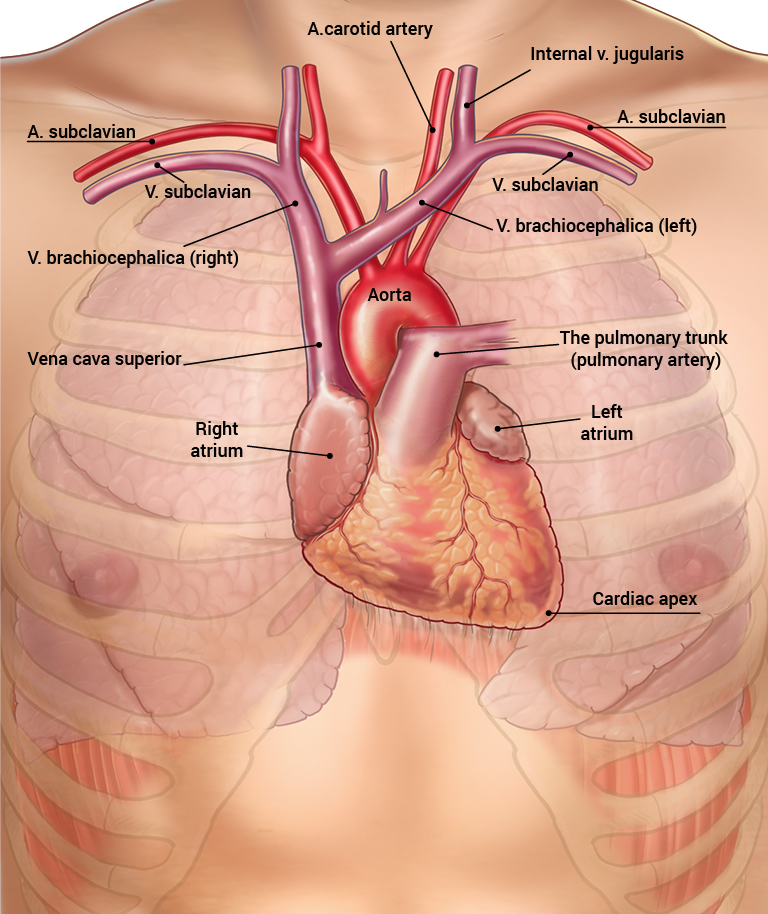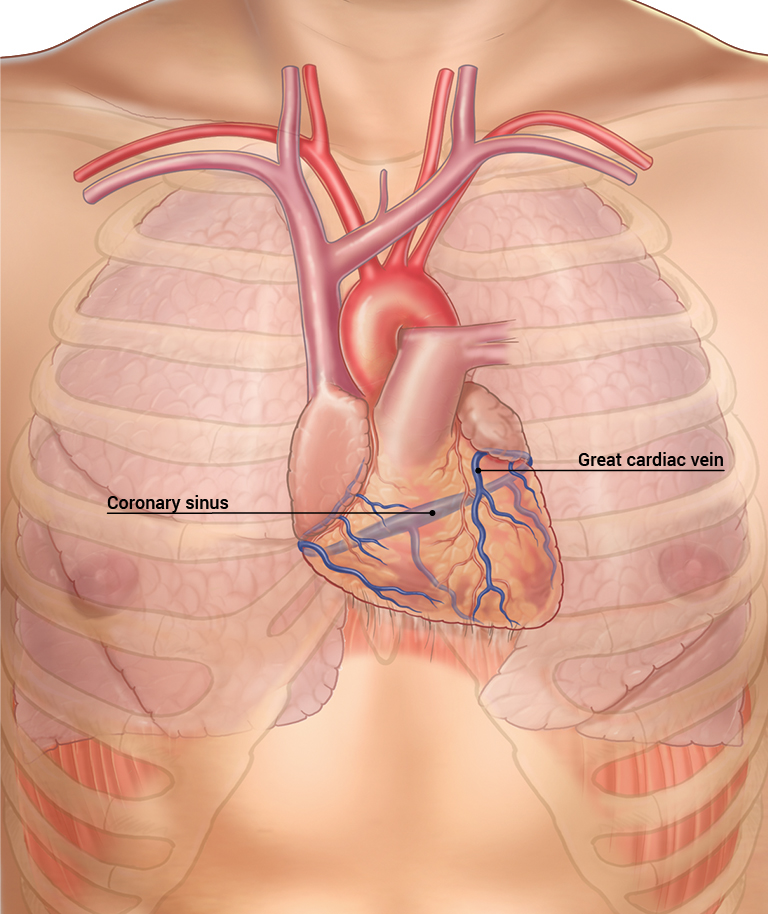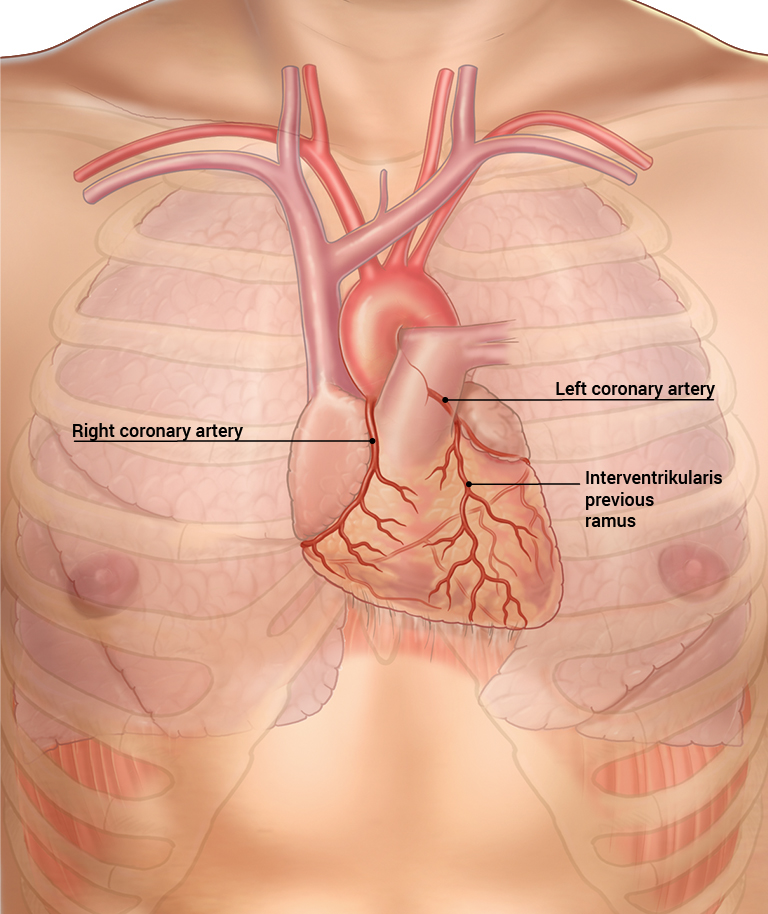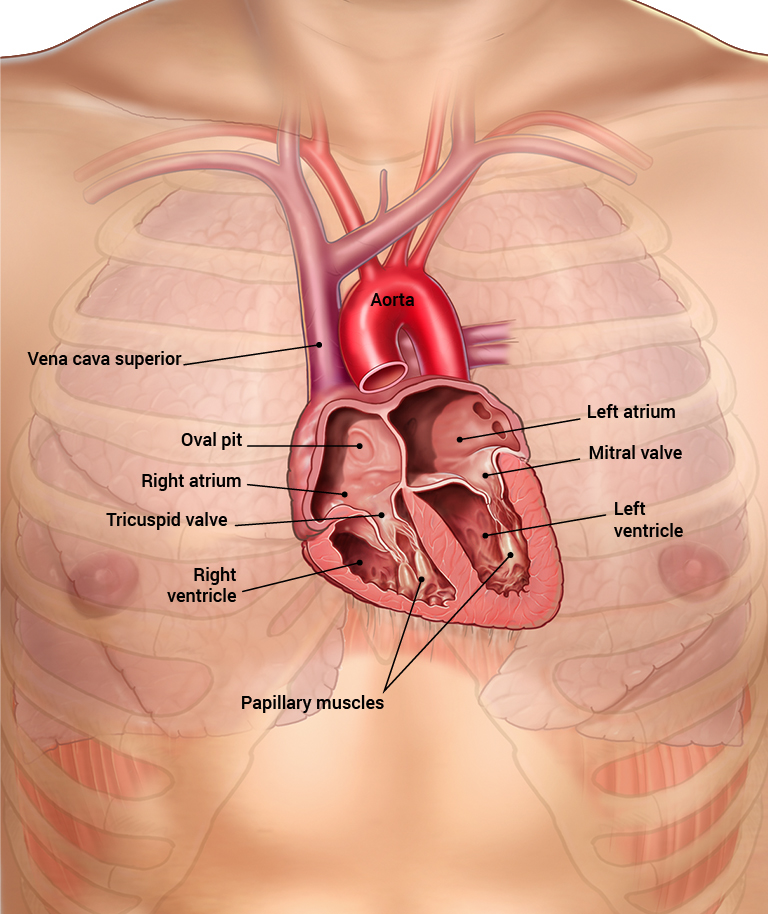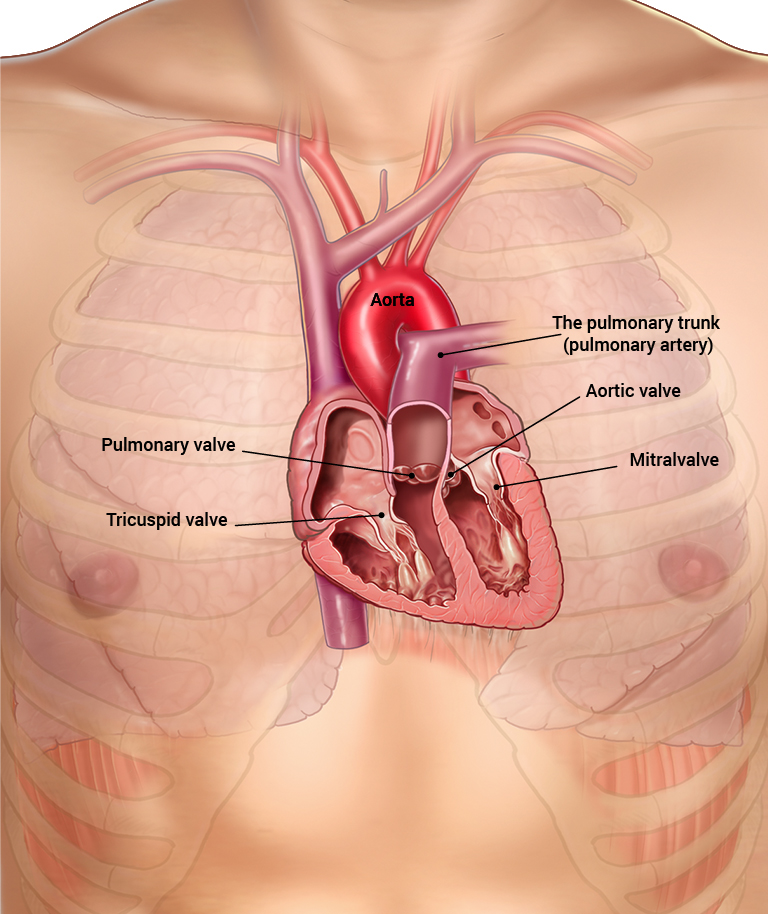The heart is a hard-working and persistent muscle which, thankfully, does not take breaks. It is essential that the muscle always gets the nutrients and oxygen it needs and therefore has a dedicated blood vessel system. This is called the coronary circulation. Coronary arteries originate at the root of the aorta and extend over the heart. From the root of the aorta, we have two arteries that supply the heart:
- left coronary artery
- right coronary artery
The left coronary artery splits and goes around the heart muscle to the posterior side, mainly supplying the left side of the heart. The right coronary artery supplies the right side of the heart and a small portion of the left.
During a myocardial infarction it is often the artery on the anterior side (ramus interventricularis anterior) which is blocked, but other coronary arteries may also become clogged and infarct other parts of the heart. If arteries in the coronary circulation become narrowed or blocked the heart muscles can be starved of the oxygen it requires. When this leads to muscle damage it is known as a myocardial infarction or ‘heart attack.’
The veins follow the arteries. This means that they lie parallel to the arteries, and are drained directly into the right atrium.
